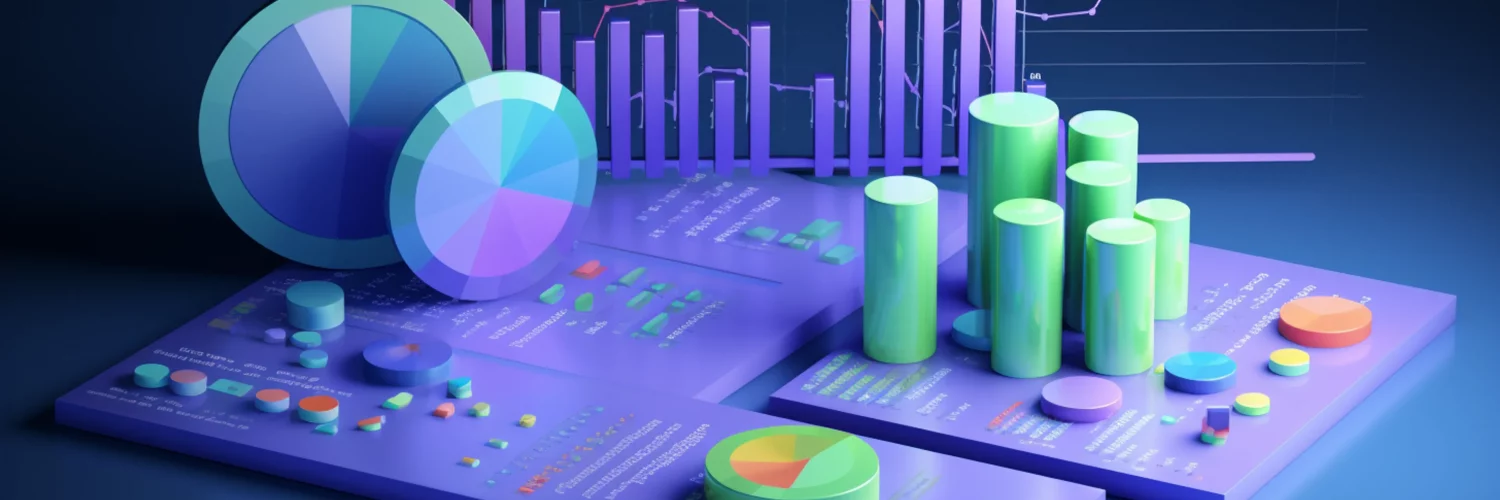Introduction
Huge volumes of data are collected by organizations at regular intervals throughout the day. The datasets come with variations and could be structured or unstructured. This combination and variability of large volumes of data are termed big data.
This blog will provide a unified approach to starting your journey into big data analytics and offer resources that will come in handy in the process.
What is Big Data Analytics
Big data analytics is the process of analyzing large volumes of complex data from various sources, structured or unstructured, to identify trends, patterns, and correlations between variables that can help organizations make strategic decisions.
These datasets exhibit variability in data types, as information is gathered from multiple sources and updated daily. This complexity makes it harder for conventional data analysis methods to process data effectively.
Big data tools such as Apache Spark, Amazon Kafka, and Hadoop are specially designed to address this issue with their advanced algorithms and features that can efficiently handle complex datasets.
Three Vs of Big Data
Big data is defined by the three Vs: velocity, variability, and volume.
- Velocity: The rate at which data is collected from different sources refers to velocity of the data. High velocity data requires specialized tools to prevent any suspicious activities in real-time. A prime example of this can be seen in online transactions through banking or shopping websites.
- Variability: As the data is collected from multiple sources, it may be structured or unstructured with varying data types and formats, as in audio, video, or textual data. This is termed variability in data. Variability helps in understanding the distribution and statistics of the data.
- Volume: It refers to the immense amount of data being collected. For instance, data from social media channels generates new information every second. Analyzing such a huge amount of unstructured data requires solutions like Spark and Hadoop that offer scalability.
Applications of Big Data Analytics
Banking and Finance:
Big data analytics is used to identify and prevent fraudulent activities and unusual patterns in net banking transactions. This allows financial services, including banks and their online mobile and net banking applications, to implement more powerful security systems with continuous monitoring and user authentication.
E-commerce and Online Transactions:
E-commerce applications like Amazon execute predictive analytics on user data, for example, their in-app browsing history and cart items, to optimize their marketing strategies through personalized ads. This not only improves business outcomes but also the overall customer experience.
Transaction histories of customers provide valuable insights into their spending habits, and companies use this data to send customized notifications and targeted discounts to improve their online businesses.
Healthcare:
In healthcare, big data analytics is utilized to analyze patient data to identify trends and patterns in diseases and infections. For example, determining if the common cold predominantly affects individuals in the age group of 15-25 for a given time period.
In drug discovery, specifically, extensive datasets are there for research and clinical trials. However, many drug design software applications are outdated and could prove to be a big hurdle, as a single process may take weeks to complete. Big data tools like Apache Spark can help us avoid this issue with their efficient data analysis capabilities.
Social media:
Social media probably contributes a substantial portion of big data. This data is used to comprehend users through their contributions on social media platforms, suggest products and services they might be interested in, display advertisements on their profiles, and launch successful user campaigns.
Machine Learning:
In machine learning projects, the accuracy of models increases with the size of the datasets. One of the most effective approaches to utilize the immense amount of big data available out there is training these machine learning models.
Machine Learning is applied to analyze user data, such as comments, content interests, engagement and retention rates, personal preferences for sentiment analysis. This allows companies to understand customer behavior and patterns. These insights are especially useful in recommending similar products, content, and ads to customers and improving their experience.
Big data analytics also plays a crucial role in fraud and abuse prevention using advanced machine learning algorithms and maintaining integrity on social platforms.
How to Learn Big Data Analytics
We will discuss this section in three parts: the skills required for working with big data, the order of execution, and a simple approach to learning each of them.
Necessary Skills for Big Data Analytics
1. Programming Languages
The prime responsibility of an analyst is to conduct data analysis on datasets. For big data, programming languages like Python are mostly used. Apart from that, Java is also preferred for big data projects because of its versatility and scalability factors.
Python libraries including NumPy, Pandas, SciPy, Tensorflow, PySpark, Redshift, and BigQuery are used to handle complex big data projects. They cut down a lot of slack and reduces the total time spent on data cleaning and analyzing processes.
2. NoSQL
In contrast to SQL, NoSQL stores data in different formats such as key-value pairs, documents, or graphs, depending on the type of data model. This provides flexibility to data models for handling huge amounts of both unstructured and structured data without compromising on speed. Popular NoSQL databases include MongoDB, Amazon DynamoDB, Redis, Cassandra, and CouchDB.
3. Data Visualization
The outcomes and findings obtained from data analysis processes need to be visually presented to easily identify trends and patterns. Matplotlib, Seaborn, and Plotly are some of the most used Python libraries that offer a variety of options to create visually appealing graphs and charts.
4. Data warehousing
Data warehouses are like a common repository, or a storehouse of structured data collected in large volumes from multiple sources. These warehouses are commonly used by data teams within an organization for conducting data reporting and querying processes in a single place.
A data warehouse provides a quick and summarized view of all the data distributed and utilized within an organization.
5. Big Data Tools
Big data tools like Spark and Hadoop are specialized tools to efficiently manage and analyze complex datasets. They divide large datasets into small clusters of data for fast and structured processing. Other noteworthy big data tools include Apache Hive, Kafka, KNIME (Linux ecosystem), Apache Storm, and ElasticSearch.
6. Statistics
Having a knowledge of fundamental statistical concepts improves your ability to understand the data more effectively. If the right columns are picked for analysis, you can draw more accurate conclusions with deeper insights into the data.
7. Shell Scripting
Shell scripting, in general, is a valuable skill to add to your resume as a developer. It saves you a lot of time by automating processing tasks and executing Linux commands. Powerful shell-scripting ecosystems like Linux or Unix maintain the efficiency of data engineering tasks when dealing with big data.
Order of Execution
Let’s explore a concise step-by-step approach to get into data analytics:
- Choose a programming language of your choice, ideally Python, and master the fundamentals. As you become comfortable with it, progress to more advanced concepts and start working with libraries.
- Get proficient with DBMS (Database Management System) and learn to work with NoSQL databases.
- Apply your skills by making a basic project that involves working with a complex dataset, establishing a connection with the database, and analyzing it using Python and its data analysis libraries. This will give you hands-on experience with the skills you just learned.
- Learn useful techniques like data collection, data processing, data retrieval, and data analysis that will build foundational knowledge to perform analysis on any kind of data.
- Explore the principles of data warehousing and how data is organized for business purposes. Familiarize yourself with BigQuery, Pyspark, and data warehouse solutions like Google Cloud Platform and Amazon Redshift. This will help you learn how to handle complex databases on cloud services.
- Experiment with various big data tools available in the market, such as Apache Spark, Hadoop, MongoDB, Cassandra, and Hive.
- Apply your knowledge by making a project with these tools. For instance, you could make a recommendation system to improve the user experience where tools like Spark can be used for data processing and Hadoop for improving scalability with real-time analysis.
- Learn the fundamentals of data visualization and data storytelling. This skill enables you to effectively present the findings in a compelling form for stakeholders to make data-driven decisions.
- Finally, make a comprehensive project by applying all the skills learned that integrates data analysis and visualization on a cloud service with complex datasets.
Recommended Resources
- Online learning platforms like Coursera and Udemy provide hundreds of courses, both free and paid, on big data analytics. These courses provide lessons for everyone, from beginners to those learning advanced concepts and techniques.
- Publications like Analytics Vidya and Towards Data Science consistently publish new articles on big data analytics and data science, including in-depth tutorials and guides on various tools and technologies. This is an excellent way to stay updated on current trends in the industry.
- GitHub and Kaggle serve as a goldmine of repositories created by developers. One can find everything from free datasets, guides, and documentations to unique projects for inspiration to get started.
Big data analytics is an ever-evolving and emerging field, and there has never been a better time to get into this industry than right now.






Add comment